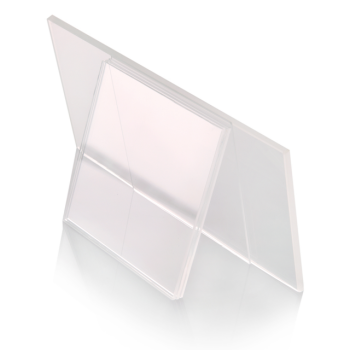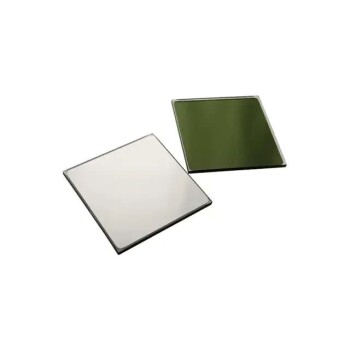Optical quartz plates are essential components in various industries, offering transparent, durable solutions for precise light manipulation. Our range includes JGS1/JGS2/JGS3 quartz plates, high-temperature resistant glass sheets, K9 quartz sheets, and more. Ideal for telecommunications, astronomy, and laboratory applications, these plates ensure exceptional clarity and tailored refractive properties.
Toggle Categories
Get Instant Support
Choose your preferred way to connect with our team
-
Get Free Quote Fill out form for detailed pricing
-
Send Email Detailed inquiry support
-
WhatsApp Quick mobile chat
Response Time
Within 8 hours on working days, 24 hours on holidays
optical quartz plates

Optical Window Glass Substrate Wafer Quartz Plate JGS1 JGS2 JGS3
Item Number : KTOM-OQP

Optical Window Glass Substrate Wafer Single Double Sided Coated K9 Quartz Sheet
Item Number : KTOM-CGS
Elevate Your Optical Applications with Our Quartz Plates
Optical quartz plates are renowned for their superior optical properties, making them indispensable in a wide array of applications. Whether you're working in telecommunications, astronomy, or laboratory settings, our quartz plates provide the precision and durability you need.
Key Features and Advantages
- High Purity Quartz Crystal: Our quartz plates are made from high-purity quartz crystal, ensuring excellent thermal and chemical resistance.
- Exceptional Clarity: Ideal for applications requiring precise light manipulation, our plates offer unparalleled optical clarity.
- Customizable Solutions: We offer a variety of quartz plates tailored to your specific needs, including single and double-sided coated options.
- Wide Range of Applications: From telecommunications to laboratory settings, our quartz plates are versatile and reliable.
How It Works
Optical quartz plates work by manipulating light through their unique refractive properties. The high-purity quartz crystal used in our plates ensures minimal light scattering and maximum transmission, making them perfect for applications requiring precise light control.
Why Choose Us?
- Professional Expertise: Our team of experts is dedicated to providing you with the best optical solutions.
- Customizable Services: We offer tailored solutions to meet your specific requirements.
- Quality Assurance: Our products undergo rigorous testing to ensure they meet the highest standards.
Get in Touch
Ready to elevate your optical applications? Contact us today to discuss your needs and explore our customizable solutions. Contact Us to learn more about how our optical quartz plates can benefit your projects.
FAQ
What Are Optical Quartz Plates?
What Are The Main Types Of Optical Quartz Plates?
What Are The Applications Of Optical Quartz Plates?
What Are The Advantages Of Using Optical Quartz Plates?
How Are Optical Quartz Plates Manufactured?
What Makes K9 Quartz Sheets Unique?
What Is The Role Of Optical Quartz Plates In Telecommunications?
How Do Optical Quartz Plates Contribute To Laboratory Research?
REQUEST A QUOTE
Our professional team will reply to you within one business day. Please feel free to contact us!
Related Articles

Advanced Technologies for Precision Ceramics
Explores key technologies and preparation methods for precision ceramic components, highlighting their applications and challenges.

Common Optical Materials and Their Properties
An overview of various optical materials, their properties, and applications across different spectral ranges.

Technological Innovations in the Fused Silica Industry
Explore advancements in fused silica, its applications, and future prospects.

Difference between Single Crystal Quartz and Fused Silica
A detailed comparison of single crystal quartz and fused silica across various properties and preparation methods.

Fused Silica Crucible: Properties, Applications, and Preparation Process
An in-depth look at the properties, applications, and preparation methods of fused silica crucibles in the solar photovoltaic industry.

Key Properties and Differences Between Fused Silica and Natural Quartz
A detailed comparison of the properties, appearance, physical, chemical, and application differences between fused silica and natural quartz.

Understanding Fused Silica: Properties, Applications, and Advantages
An in-depth look at fused silica, its unique properties, and its diverse applications in various industries.

Comprehensive Overview of Fused Silica: Properties, Production, Applications, and Market Prospects
An in-depth exploration of fused silica, its properties, production process, diverse applications, and promising market outlook.

The Rise of Glass Substrates in Advanced Semiconductor Packaging
Explores the shift towards glass substrates in advanced semiconductor packaging, their advantages, and challenges.

Optical Components: Window Sheets and Their Applications
An overview of various types of optical window sheets, their materials, precision, and coating options.

Factors in Selecting Large Optical Windows
Considerations for choosing large optical windows, including material, polishing, and coating.

Comprehensive Guide to Optical Windows: Material Properties and Surface Specifications
This article delves into the properties and specifications of optical windows, focusing on material properties, surface quality, and anti-reflection coatings.

Optical Window Sheet Selection Guide
A comprehensive guide on selecting optical window sheets based on substrate material, optical and mechanical precision, and coating options.

In-depth analysis of the key characteristics and advantages of polytetrafluoroethylene
This paper will take an in-depth look at the key properties of polytetrafluoroethylene (PTFE), such as high-temperature resistance, corrosion resistance and low friction, as well as the wide range of applications and advantages in industry and everyday life.

Molecular Distillation Equipment in Liquid Crystal Material Production
Exploring the role of molecular distillation equipment in enhancing purity and efficiency in liquid crystal material production.

Common Rework Causes and Solutions for Tubular PECVD Coatings
This article discusses common rework causes in PECVD coating for crystalline silicon solar cells and provides feasible solutions to improve quality and reduce costs.

Common Abnormal Causes and Solutions for PECVD Coating in Crystalline Silicon Solar Cells
Analyzes common PECVD coating issues in solar cells and provides solutions to improve quality and reduce costs.

Preparation and Growth Mechanism of Diamond Thin Films by Chemical Vapor Deposition
This article explores the preparation methods and growth mechanisms of diamond thin films using Chemical Vapor Deposition (CVD), highlighting the challenges and potential applications.

Application of Vacuum Coating on Architectural Glass
An in-depth look at the methods and benefits of vacuum coating on architectural glass, focusing on energy efficiency, aesthetics, and durability.

Thin Film System Design: Principles, Considerations, and Practical Applications
An in-depth exploration of thin film system design principles, technological considerations, and practical applications in various fields.
